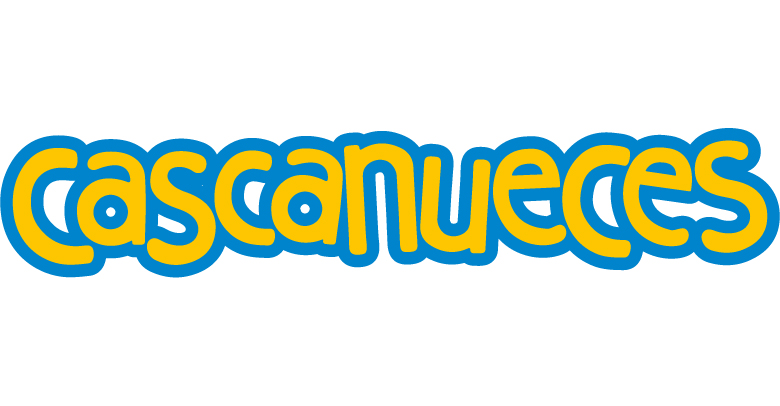NPXL dosages: 30 caps
NPXL packs: 1 bottles, 2 bottles, 3 bottles, 4 bottles, 5 bottles, 6 bottles, 7 bottles, 8 bottles, 9 bottles, 10 bottles
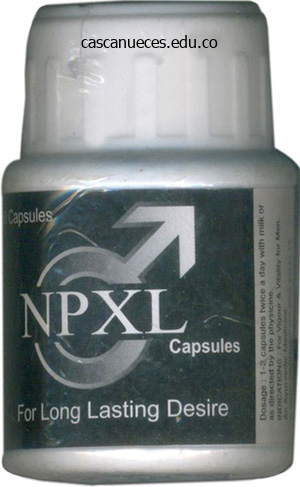
Order npxl 30caps mastercard
Caregiver coaching in therapy provides the connection between the therapeutic and the home setting. Direct instruction and steering from clinicians in the way to perform treatment procedures is thus important. Future areas for research Randomized control trials are the gold commonplace for assessing the efficacy of therapy interventions. Multicenter collaboration will allow bigger research that further advance empirical testing of the effects of intervention. Feeding remedy case examples Feeding remedy case examples are presented in Appendix 45�2. Evidence-based practices for children, youth, and younger adults with autism spectrum disorder: a complete review. Using negative reinforcement to enhance self-feeding in a baby with meals selectivity. An alternating remedies comparison of two intensive interventions for food refusal. The token financial system for children with mental incapacity and/ or autism: a evaluation. On the relative contributions of noncontingent reinforcement and escape extinction within the therapy of meals refusal. Use of the high-probability tutorial sequence and escape extinction in a baby with food refusal. A evaluate of "noncontingent" reinforcement as treatment for the aberrant behavior of individuals with developmental disabilities. Noncontingent reinforcement is an empirically supported remedy for problem habits 31. Using Storytelling to Support Children and Adults with Special Needs: Transforming Lives Through Telling Tales. Cueing, demand fading, and positive reinforcement to establish self-feeding and oral consumption in a baby with continual food refusal. Intensive behavioral therapy for severe feeding issues: a cheap various to tube feeding Treatment outcomes for extreme feeding problems in youngsters with autism spectrum disorder. Parental use of escape extinction and differential reinforcement to deal with meals selectivity. A preliminary analysis of empirically derived consequences for the treatment of pica. Diaphragmatic respiration for 608 Pediatric dysPhagia: etiologies, diagnosis, and ManageMent rumination syndrome: efficacy and mechanisms of action. Chicken or Turkey 610 Pediatric dysPhagia: etiologies, analysis, and ManageMent 2. I get to depend my bites of soup so long as there are three different things on my spoon. She was referred for intensive feeding remedy to assist in the transition from gastrostomy tube (G-tube) feeding to oral feeding. Sabrina had been G-tube dependent since start, having initially acquired the G-tube secondary to medical complications precluding oral consumption. She exhibited oral hypersensitivity and feeding refusal behaviors every time meals or liquids were provided to her by her family. Prior therapy of her food refusal had consisted of a collection of oral sensory remedy periods with an occupational therapist. She had progressed, with acceptance of oral care and tooth-brushing in addition to restricted food tastes orally. In an effort to enhance her oral quantity and finally wean her from the G-tube, she was admitted to an intensive feeding day treatment program. Her parents had been concerned within the therapy process and have been profitable in studying and implementing the behavioral methods between therapy periods. The first component of the treatment was escape extinction (nonremoval of the spoon).
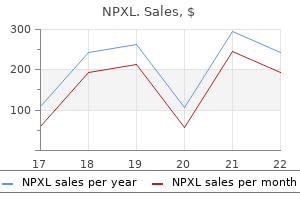
Npxl 30caps with visa
Accurate lateralization and localization of cortical language centers is essential for kids undergoing epilepsy surgical procedure to avoid postoperative language deficits. A panel of duties is extra likely to demonstrate the total extent of language activation. Language duties in a block design are often easier for kids to follow than duties offered in event-related paradigms. In a block design paradigm, the child is requested to carry out the language task for 20 to 30 seconds, alternated with a control task for a complete duration of 5 or 6 minutes. The choice of a management task is essential; ideally, the control task will differ from the language task solely within the perform of interest. For instance, if the language task is a word studying task, the management task may be to take a look at a "word-like" string of symbols, thereby controlling for the visual activations associated with wanting on the word. In (a), the letter fluency task demonstrates bilateral frontal activations, the verb technology task demonstrates left frontal activations, and the auditory determination task demonstrates left frontal and temporal activations. In (b), letter fluency and verb generation reveal bilateral frontal activations, and the addition of the auditory choice task demonstrated left temporal activations. The benefit of this is the hand motion of the motor blocks is easily visualized from exterior the scanner to ensure the child is following the duty. We pair this motor task with letter fluency and verb era tasks and have discovered them to provide glorious frontal lobe language region activations. For most of our sufferers, we utilize the following covert duties with task length between 5 and 6 minutes: covert visible letter fluency, covert visible verb technology paired with an overt motor control task and covert auditory description determination task, and auditory class determination task. For covert tasks, response monitoring may be done using button presses or by instructing sufferers to tap their upper leg with a single hand to indicate a selection between completely different stimuli. Lateralization of language perform relies on handedness, household history of handedness, and structural and useful brain pathology. It has also been shown that laterality of language perform changes with age, with increasing left-sided dominance as children age, reaching a peak round 20 years of age, and decreasing left-sided dominance within the later adult years. Practical aspects of conducting large-scale useful magnetic resonance imaging research in children. Practice-related modifications in human mind functional anatomy during nonmotor studying. Atypical language laterality is associated with large-scale disruption of network integration in kids with intractable focal epilepsy. Resting-state practical magnetic resonance imaging for surgical planning in pediatric patients: a preliminary experience. Stone and Bartosz Grobelny the goal of epilepsy surgical procedure is the removing or disconnection of seizure foci with maximal preservation of neurological function, and particularly those functions considered eloquent, inside the realm of fantastic motor and related sensory capabilities. Children, extra often than adults, require common anesthesia for such surgery, and the avoidance of motor or tactile sensory deficits requires techniques that determine and protect the Rolandic cortical sulci. The recent preoperative use of navigated transcranial magnetic motor stimulation is offered, together with additional monitoring ideas for future. To achieve this objective, a quantity of adjuncts are used to attempt to identify both the surgical target of resection and protect areas of eloquent cortex, outlined as a area whose resection or disconnection can result in a everlasting neurological deficit inside the realm of motor, sensory, or language functioning. Focal surgical resections for seizure management in the space around the central sulcus of Rolando carry a everlasting deficit fee of about 28%, which we consider could be lessened by cortical or subcortical mapping and monitoring techniques. The follow and success of pediatric epilepsy surgery and a necessity for cortical mapping in youngsters actually pose further calls for. A higher understanding of maturation related to childhood cortical improvement as well as monitoring modalities of cortical electrical or magnetic excitability borrowed from intraoperative brain and spinal wire monitoring have led to methodologies enabling localization of eloquent motor cortex with decreased delivery of potentially harmful electrical power. We focus on varied pitfalls within the sensible use of these modalities including crucial anesthetic issues, and in closing, present newer ideas and future advised instructions. The primary motor cortex is answerable for voluntary gross and nice actions in contralateral muscle groups with extra cortical space (larger homunculi) devoted to the face, tongue, hand, and foot in humans. Similar to the somatosensory cortex, the first motor cortex is somatotopically organized with the face, neck, and tongue motor regions, inferiorly close to the sylvian fissure, hand and arm neurons in the center posterior-directed convexity, proximal leg superiorly, knee near the superior crest of the gyrus, and distal decrease extremity and foot inferiorly within the mesial parasagittal area. The face is bilaterally innervated within the fetus, however extra so within the higher face after term. The pre- and postcentral gyri are connected in three places inside the depth of the central sulcus and considered a continuum of 1 area into another (pli de passage of Broca).
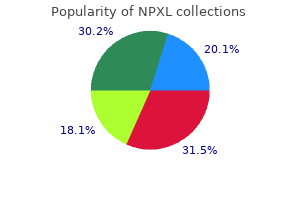
Buy 30 caps npxl mastercard
The editors wish to thank Christopher Young, Radiology Assistant, for his efforts in amassing lots of the radiographs for this chapter. Pediatric Videofluoroscopic Swallow Studies: A Professional Manual with Caregiver Guidelines. Guidelines for Speech-Language Pathologists Performing Videofluoroscopic Swallowing studies. Balance between radiation dangers and obtaining a complete videofluoroscopic swallow research in pediatric patients. Management of pediatric radiation dose using Philips fluoroscopy methods DoseWise: excellent image, perfect sense. Image gently, step flippantly: increasing radiation dose consciousness in pediatric interventions by way of a global social advertising marketing campaign. Use of medical imaging procedures with ionizing radiation in youngsters: a population-based research. Nutritive and non-nutritive swallowing apnea period in term infants: implications for neural control mechanisms. Maturational adjustments within the rhythms, patterning, and coordination of respiration and swallow during feeding in preterm and time period infants. Development of co-ordination of sucking, swallowing and respiration: ultrasound research of time period and preterm infants. Improving bottle feeding in preterm infants: investigating the elevated side-lying position. Effects of nonnutritive sucking on behavioral organization and feeding perfor- 24. Coregulated method to feeding preterm infants with lung disease: effects throughout feeding. It allows the radiologist and the speech-language pathologist to take a careful take a glance at the process of swallowing. The speech-language pathologist might be present during the test and should ask the kid to change position or strive different textured foods or liquids to have the ability to assist find the safest and finest way for the child to eat. For youngsters who obtain tube feedings, these feedings must also be stopped four hours earlier than the research. To make kids more comfortable during the take a look at, a mother or father may be asked to feed the barium-prepared gadgets to the child. The youngsters tolerated advancement of the scope with out difficulty, allowing clinicians to make sure that the pres- 31. Findings revealed good validity and reliability between the 2 procedures with regard to the judgment of bolus transfer control, laryngeal penetration and depth, and aspiration. The general scientific outcomes had been similar and the resultant medical suggestions derived from all three studies performed on these children were just about equivalent. Both professionals must have experience in the diagnosis and management of infants and youngsters with swallowing disorders. Although the scheduler at our institution offers an overview of the process, usually a nurse or a nurse practitioner has an extra explanatory conversation. Although a videoendoscope offers the best image quality, its larger dimension may limit its applicability. Infants and children are positioned in a sitting, semi-reclined, side- lying, or cradle position, depending on what simulates their feeding expertise at home. Breastfeeding infants are positioned upright for scope insertion and are repositioned for the examination. Doing this atraumatically and comfortably requires the proceduralist to keep the endoscope throughout the lumen of the aerodigestive tract, thereby minimizing contact of the endoscope with the medial or lateral partitions of the nostril. Ideally, the endoscope is held between the thumb and the index finger of the nondominant hand. The third, fourth, and fifth fingers should relaxation on the nasal bridge and forehead of the affected person to reduce relative movement of the endoscope ought to youngsters transfer their head. The scope ought to be passed through the nasal vestibule, with the proceduralist visualizing the nasal septum medially and the head of the inferior turbinate laterally. The nasopharynx is reached when the scope is passed by way of the posterior choanae. The adenoid pad is seen superiorly in the nasopharynx, and the taste bud is seen inferiorly. The scope ought to be kept within the midline and handed posteriorly over the free fringe of the taste bud.

Purchase npxl without prescription
The subpial resection of the cortex within the treatment of jacksonian epilepsy (Horsley operation) with observations on areas four and 6. Partial excision of the motor cortex in remedy of jacksonian convulsions; ends in forty one cases. Tailored resections for intractable rolandic cortex epilepsy in children: a single-center experience with forty eight consecutive circumstances. Confirmation of two magnetoencephalographic epileptic foci by invasive monitoring from subdural electrodes in an adolescent with right frontocentral epilepsy. Localisation of the sensorimotor cortex throughout surgical procedure for mind tumours: feasibility and waveform patterns of somatosensory evoked potentials. Stimulation threshold potentials of intraoperative cortical motor mapping using monopolar trains of 5 in pediatric epilepsy surgical procedure. Intrinsic epileptogenicity of human dysplastic cortex as advised by corticography and surgical outcomes. Epilepsia 2003;44(5):718�723 forty eight Summary Anterior Peri-insular Quadrantotomy Giulia Cossu, Mahmoud Messerer, Sebastien Lebon, Etienne Pralong, Margitta Seeck, and Roy Thomas Daniel Disconnective surgery is increasingly practiced in kids with pharmacoresistant epilepsy secondary to subhemispheric and hemispheric epileptic syndromes. A full disconnection of the whole epileptogenic zone assures sufficient seizure control. In sufferers with subhemispheric epilepsy and intact motor functions, the surgical procedure also wants to ensure the preservation of motor features. When the epileptogenic focus is localized to one frontal lobe anterior to the motor cortex and in presence of residual motor features, the anterior peri-insular quadrantotomy with preservation of the primary motor cortex and of its efferent pathways represents a viable different to the normal frontal lobectomy. The intraoperative useful mapping is a key point to guide the whole disconnective procedure and to protect residual motor functions. From a technical perspective, the surgery may be summarized into 4 steps as follows: the suprainsular window, the anterior callosotomy, the intrafrontal disconnection, and the frontobasal disconnection. This article offers with the indications of this surgical procedure and particulars the surgical steps of this anterior quadrant subhemispheric epilepsy surgery. Keywords: subhemispheric epilepsy, frontal disconnection, disconnective surgical procedure, quadrantotomy, peri-insular disconnection Indications Similar to all surgical procedures for resective or disconnective epilepsy surgery, a good concordance between scientific, radiological, and electrophysiological knowledge is fundamental, all pointing towards an epileptogenic zone in a single frontal lobe, anterior to the motor strip, within the presence of normal/near-normal motor functions. The etiological pathologies that present in this manner embody cortical dysplasia (atrophic or hypertrophic variants), Sturge�Weber syndrome, prenatal ischemic insults, or hemorrhagic accidents. An Illustrative Case A boy introduced to us at the age of 6 years, with the diagnosis of pharmacoresistant epilepsy. His seizure dysfunction was characterised by 4 to 5 generalized seizures per yr, predominantly nocturnal, and starting with pain and tingling in the left leg. Possible dyscognitive seizures had been also observed, throughout which the kid responded only with a delay of several minutes, but appropriately, indicating absence of lack of consciousness and aphasia in the course of the seizure. He was additionally identified for extreme headaches (without lateralization) and vomiting, which occurred through the day but would wake him up typically from sleep. Sometimes these headaches have been observed additionally through the postictal part, and therefore a seizure-related origin was suspected. Introduction Surgery for pharmacoresistant epilepsy in kids with subhemispheric and hemispheric epileptic syndromes has undergone a change with respect to most facilities preferring to perform disconnective procedures over resective approaches. Adequate seizure control is assured by an entire disconnection of the whole epileptogenic zone. In subhemispheric epilepsy the place motor operate is unbroken, this disconnection ought to ensure the preservation of motor capabilities. This article offers with the indications, surgical steps, and end result of this type of subhemispheric epilepsy surgical procedure. Note that the majority discharges propagate to the left hemisphere, main effectively to a bifrontal syndrome. His neurological examination was normal, aside from poor speech and a discrete right facial weak spot. Examination of developmental milestones revealed poor language improvement, characterized by a lowered vocabulary, but had no deficiency of different expressive or comprehensive expertise. Anesthetic Considerations Specialized pediatric anesthesiologist should help the surgical group.
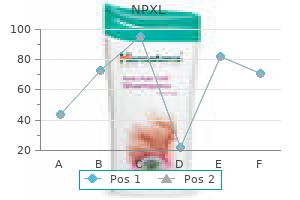
Buy npxl 30caps low price
During the dissection of the arachnoid to uncover ambient and quadrigeminal cisterns, care must be taken to determine the fourth nerve. The fourth nerve advances between the posterior cerebral artery and superior cerebellar artery after rising from the dorsal side of the crus cerebri. Before the tentorial opening, the fourth nerve ought to be adopted till it pierces the tentorium. An incision is made about 2 cm posterolateral from the posterior portion of the tentorial incisura, right in the heart of the publicity. A cottonoid is placed above this opening to defend the supratentorial buildings. The incision is then gently carried toward the tentorial hiatus to the lateral and posterior facet of the quadrigeminal cistern. The incision is then extended from the start line anteriorly to the midpoint of the petrous ridge. Tack-up sutures are then positioned to help elevate the higher leaflet of the tentorium to displace the transverse sinus. After this maneuver, varied anatomical structures could be identified as landmarks to assist with orientation throughout the relaxation of the surgery. The inferior colliculus, the trochlear nerve, P3 section of the posterior cerebral artery and superior cerebellar artery, the galenic venous system, and the superior petrosal vein are useful landmarks throughout the surgery. The collateral sulcus, which separates the parahippocampal gyrus and fusiform (medial temporo-occipital) gyrus, must be recognized. In sufferers with hippocampal sclerosis, due to atrophic mediobasal buildings, the uncus and third nerve may be disclosed at this step. In sufferers with tumors, however, it may be dangerous to try to expose these buildings because of the voluminous tumor tissue on this step. The inferior colliculus is the principle landmark for the begin line of the parahippocampal gyrus resection. In patients with tumors extending behind this level, the tumor is dissected anterior to this level initially. The collateral sulcus, which marks the lateral restrict of resection, is recognized subsequent. A perpendicular posterior parahippocampal incision is made with bipolar forceps at the level of the inferior colliculus, which is proscribed by the collateral sulcus laterally. Subpial dissection is finished, preserving the most important inferior temporal arteries from the P3 to P2 segments of the posterior cerebral artery. Next, subpial resection of the posterior facet of the subiculum is completed and is carried forward to the uncus medially. The hippocampal arteries from the P2 to P3 segments of the posterior cerebral artery are recognized, coagulated, and cut. Subpial dissection is continued laterally to determine the collateral sulcus and, with mild dissection of the inferior aspect of the parahippocampal gyrus just medial to the collateral sulcus, the dentate gyrus is identified by its distinct grayish colour. The alveus is then dissected, and the posterior facet of the temporal horn, close to the atrium, is entered. Unique to this exposure is that the roof of the temporal horn is in line of sight. The choroidal fissure is identified in the temporal horn of the lateral fissure, and dissection is carried ahead to the tip of the temporal horn. In patients with tumors, the hippocampus and parahippocampal gyrus are eliminated gradually with bipolar forceps, suction tubes, and ultrasonic surgical aspiration. The remainder of the top of the hippocampus, the uncus, and the amygdala are then resected, taking care to stop on the point where the lateral wall meets the roof of the temporal horn near the collateral eminence. Resection of the amygdala commences at its junction with the tail of the caudate nucleus; the amygdala is recognized clearly by its hazelnut color beneath the ependymal layer. This method presents greatest view of the amygdala and full resection when in comparability with different surgical strategies. The technique of inserting a cotton ball under the parahippocampal gyrus brings it into view; due to this fact, resecting probably the most anterior and inferior elements of the parahippocampal gyrus becomes potential. After hemostasis is achieved, the tentorial sutures are released and reapproximated to reconstruct the anatomical position of the tentorium.
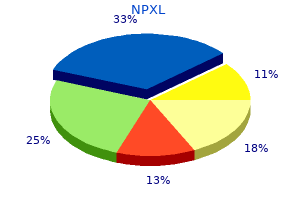
Best buy for npxl
Social employees may be useful in figuring out applicable referrals to psychological health companies or parenting classes in the neighborhood, when such sources are wanted. Medical neglect the social work evaluation additionally includes figuring out key info regarding family dynamics and construction. Gaining perception into these components helps to improve understanding of household dynamics because it relates to the structure of feeding. The social worker is responsible for assessing possible concerns for medical neglect and the severity of those issues. Medicaid Medicaid is a joint federal and state program that covers medical prices for individuals who meet monetary eligibility criteria. The federal authorities establishes minimal eligibility and protection pointers; nonetheless, states can establish their very own tips, which can exceed the minimal federal guidelines. Individuals must additionally meet state necessities relating to residency, immigration standing, and documentation of citizenship. Additionally, some states receive waivers to broaden services to different populations. The change in terminology is important to note, because it modifications the primary target from the identified psychological sickness of the caregiver to the perpetrated abuse of the child. In these cases, kids are often submitted to pointless testing, procedures, and interventions in which the caregiver uses the medical neighborhood as the means of perpetrating the abuse. It is necessary to understand the risk of medical child abuse being present throughout the context of discussing feeding, as medical professionals typically rely on parent reporting for symptoms of feeding. Given the role of the medical community in putting a child via unnecessary testing, early identification of these instances is imperative. Given the delicate nature of these circumstances, group specialists in the area of medical child abuse ought to be consulted. In our institution, we name upon specialists on the Mayerson Center for Safe and Healthy Children. This middle conducts a nationally acknowledged program that focuses on the evaluation, therapy, and management of child abuse. As youngsters are learning to exert their independence, behaviors corresponding to throwing meals or refusing to sit within the highchair could come up. These behaviors could be fully normal stages of growth, and the social worker might help educate dad and mom or caretakers concerning normal developmental behaviors and also present them with specific evidencedbased responses to manage the habits. The maladaptive behaviors of the kid usually evoke intense emotional response in mother and father. For most preschoolers, some degree of choosy consuming is usually a standard stage of development. For instance, battle might arise when kids exert independence by desirous to feed themselves whereas their parents endeavor to spoon feed them. Another critical example related to understanding developmental normative behaviors may be seen within the domain of tension. Anxiety could be a completely regular response for all children at some stage in their development, and a level of tension can truly be helpful in inspiring them to accomplish a tough task or overcome a hardship. To this end, a variety of questions associated to the structure of mealtimes ought to be requested: n How do relations work together during feeding times For many caregivers, feeding issues can be extraordinarily emotional and are sometimes accompanied by emotions of guilt, failure, and anxiety. Supporting mother and father in addressing their emotions and involving the whole household system in therapy is crucial to success. As mentioned above, cultural factors can play an necessary role in influencing feeding. These components often impression the forms of food provided, attitudes about selffeeding, seating for meals, and parental attitudes about feeding. Understanding these dynamics is a crucial a part of making a valid diagnostic evaluation. The social worker can assist the household in expressing the cultural values which are important to family members in regard to feeding in order that the medical group can take these issues into consideration when making a plan for feeding intervention. Do multiple caregivers respond the identical way or have they got totally different approaches to feeding the child Direct Observation of the Feeding Environment In addition to asking questions such as these cited above, direct remark of both the kid throughout eating and the interaction between the parent(s) and the kid during mealtimes can be especially useful.
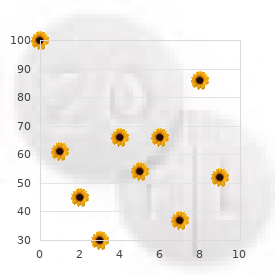
Buy npxl 30caps otc
They hypothesize that the elimination of the deep hemispheric structures may cut back recurrent seizures resulting in reoperation in useful hemispherectomy. There have been no randomized clinical trials to examine the various procedures; most reviews are retrospective critiques of the experience of a single institution or surgeon. The success rate for seizure management is usually good, and the outcomes amongst different sequence are related. A recent retrospective collection of one hundred fifteen youngsters undergoing hemispherectomy at the Cleveland Clinic reported 56% seizure freedom with a imply follow-up of 6 years; however, the surgical approach was unspecified. The most common cause of drug-resistant epilepsy on this cohort was stroke, with 92% Engel class I seizure outcome. Eight of 11 sufferers who underwent peri-insular hemispherotomy had class I consequence and 4 of the five who underwent hemidecortication had class I end result. In a follow-up article by Basheer and colleagues in 2007,32 with median 6-year follow-up as in contrast with three years in the first research, 79% of the sufferers continued to have complete seizure control, and over 90% of those patients were no longer on antiepileptic medicines. Twelve of 14 patients with preoperative slowing of epileptiform exercise within the contralateral hemisphere are seizure free. The authors of most revealed sequence reporting outcomes for peri-insular hemispherotomy focus on seizure outcomes and postoperative problems. More just lately, outcomes of the level of adaptive perform postoperatively are being examined with aspects of cognitive behavioral motor outcomes being reported. For occasion, Basheer and colleagues32 described the level of adaptive functioning as assessed by scales that evaluate motor skills, social interplay, communication abilities, personal dwelling skills, and group living expertise. The patients present process surgical procedure for hemispheric seizure issues had severe impairment in finishing up all age-appropriate actions of day by day residing. Age at surgical procedure was additionally considerably related to these scores, with younger youngsters having better functioning. In the examine of 115 kids undergoing hemispherectomy,45 with a mean follow-up of 6 years and mean age at follow-up of 12. Overall, 83% of kids have been walking independently and 70% had passable spoken language, but only 42% of youngsters over 6 years of age at follow-up had passable studying language expertise. The main predictors of poor practical end result have been seizure recurrence, which predicted poor useful end result throughout all domains, and structural abnormalities within the contralateral hemisphere. The elevated incidence of behavioral and adjustment problems in epilepsy as reflected in the current study by Basheer et al32 emphasized the significance of considering these impairments on life high quality. An examination of the baseline traits reveals that the children who underwent hemispheric surgical procedure had been usually youthful than those who had temporal or frontal resections. Those in the frontal resection group had been taking essentially the most antiepileptic medicines. In addition, 11 members of the hemispherectomy group were untestable because of low practical levels. In addition, for every of these things, the parent charges how typically the specified drawback or scenario happens and the quantity of concern each drawback causes. There are two basic scale objects that mirror global restrictions and activities and then eight items pertaining to specific day by day activities. The functional ability within the affected arm and leg recovered to the preoperative standing in all however two sufferers, and no sufferers had a lower in ambulatory standing because of surgery. Three sufferers who had incomplete hemianopia had an entire anopia after surgery, and no patients had a change in their speech operate after surgical procedure. When comparing the postoperative course of the hemidecortication with that of the peri-insular hemispherotomy, the incidence of postoperative fever, meningismus, and irritability is considerably less following peri-insular hemispherotomy. This generally lasts as long as three weeks despite no proof of progressive ventriculomegaly or an infection to account for his or her signs. This syndrome has also been described by other teams and located to be much less prevalent in patients who endure peri-insular hemispherotomy in comparison with other strategies of hemispherectomy. The incidence of hydrocephalus requiring ventriculoperitoneal shunting after peri-insular hemispherotomy ranges from 0 to 4%. Shimizu and Maehara23 reported in their transopercular hemispherotomy collection that 15% of sufferers required a ventriculoperitoneal shunt; this end result was similar to the charges reported by Delalande et al48 for vertical parasagittal hemispherotomy (15. The incidence of hydrocephalus is significantly improved over anatomical hemispherectomy (10�78%),8,29,37,38,forty nine,50 useful hemispherectomy (5�12%),eight,34 and hemidecortication (9�40%). The edema secondary to infarct on this case was attributed to sacrifice of arteries and veins while growing a steady suprainsular and infrainsular window. In one other affected person, a distant hemorrhage occurred contralateral to an atrophic-operated hemisphere leading to demise.
Buy npxl from india
Long-term seizure end result after resective surgery in sufferers evaluated with intracranial electrodes. Complications and outcomes of subdural grid electrode implantation in epilepsy surgery. Morbidity and an infection in mixed subdural grid and strip electrode investigation for intractable epilepsy. Minimally invasive methods for epilepsy surgical procedure: stereotactic radiosurgery and other technologies. Front Surg 2016;three:64 forty five Summary Extratemporal Resection and Staged Epilepsy Surgery in Children Daxa M. Bollo In youngsters, the predominance of epilepsy of extratemporal origin is expounded to developmental brain abnormalities. Cortical dysplasia is very prominent within the pathologic specimens of kids who bear resections for extratemporal epilepsy. Published rates of seizure freedom after surgery for extratemporal epilepsy range between 30 and 80%, in contrast with greater than 80% for temporal lobe epilepsy. In kids, resections of extratemporal seizure foci are more widespread than resections of the temporal lobe. Although much of the literature pertaining to extratemporal epilepsy surgery is targeted on frontal lobe epilepsy, a focal epileptic substrate could also be located wherever inside the cerebral cortex. Several published studies have demonstrated both the safety and efficacy of extratemporal epilepsy surgical procedure in youngsters. Whereas anteromesial temporal lobectomy for temporal lobe epilepsy is known to carry a fairly low morbidity, the resection necessary for extratemporal seizure foci involves bigger cortical resection of the areas of ictal onset and seizure propagation wherever exterior of the temporal lobe, which frequently is adjoining Unique Considerations in Pediatric Extratemporal Epilepsy Surgery Over the previous decade, the scientific literature describing extratemporal epilepsy surgical procedure in kids has grown enormously. Children as a unique affected person inhabitants warrant special consideration for a variety of reasons. The most common cause of intractable partial epilepsy in adults is hippocampal sclerosis, classically handled surgically by anterior temporal lobectomy with amygdalohippocampectomy. In youngsters, nonetheless, the predominance of epilepsy of extratemporal origin is expounded to developmental mind abnormalities. Compared with those in adults, outcomes reported following extratemporal seizure focus resection are higher in kids. The growing mind may be very sensitive to the detrimental effects of recurrent seizures, that are related to probably everlasting neuropsychological and cognitive sequelae. Typically, the preoperative analysis consists of a complete battery of checks, all designed to localize the epileptogenic zone and define the eloquent cortex. A thorough understanding of the potential strengths and limitations of each of these strategies is important for acceptable affected person selection and passable surgical outcomes. Other noninvasive techniques are also commonly used to further localize the ictal onset zone and map functionally eloquent cortex. Wada testing (intracarotid amobarbital test) is beneficial for establishing the laterality of language and memory function in cooperative youngsters. In addition, a radical neuropsychological analysis is crucial not only for offering a preoperative baseline but in addition for probably offering corroborative information to a suspected ictal focus. Comparison of preoperative and postoperative neuropsychiatric checks could help decide whether ictal habits has been altered. Limitations of this technique include analysis of interictal knowledge solely and significantly diminished interictal spike frequency under basic anesthesia. Technically, this procedure is similar in adults and kids: electrodes are placed over the putative epileptogenic zone and interictal electrical spike activity is characterised. It is mostly reliable if an interictal spike frequency reaches no less than one spike per minute. This technique is broadly applied in kids with brain tumors and refractory epilepsy, the place the ictal onset zone is incessantly localized to cortex adjoining to the tumor and the resection of perilesional cortex with irregular interictal spike activity correlates with long-term seizure freedom. Extraoperative ictal focus mapping via stimulation across subdural electrodes (arrays of two. A reduction in complication price with rising surgical experience has been reported. However, it also decreases the seizure frequency, which may lead to longer extraoperative monitoring durations to seize adequate data to localize the ictal focus. The options embody either no surgical procedure or using a palliative process, such as vagal nerve stimulation or corpus callosotomy, in the applicable scientific setting.
References
- Dalakas MC. Intravenous immune globulin for dermatomyositis. N Engl J Med. 1994;330:1392-1393.
- Kearon C, Hirsh J: The diagnosis of pulmonary embolism, Haemostasis 25:72, 1995.
- Roden DM. Clinical practice. Long-QT syndrome. N Engl J Med 2008;358:169-176.
- Goebel MU, Trebst AE, Steiner J, et al. Behavioral conditioning of immunosuppression is possible in humans. FASEB J 2002; 16(14):1869-73.


